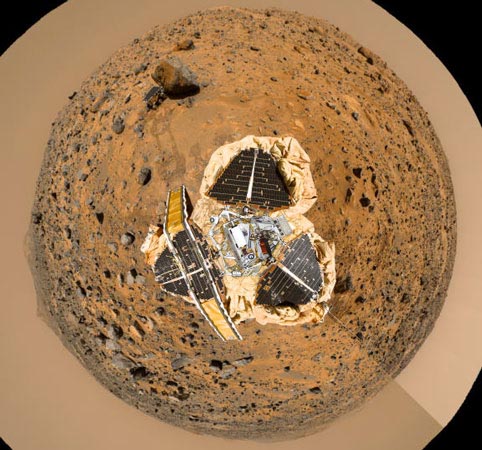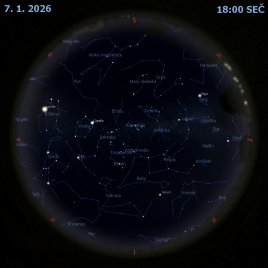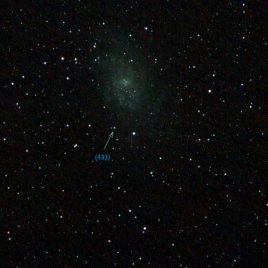Z nevysoka nad sondou Mars Pathfinder

Kdyby jste se mohli vznést nad sondu Pathfinder vyslanou k Marsu v roce 1994, tak by jste mohli uvidět toto. Přímo pod vámi je řídící věž základny Sagan Memorial Station. Tři tmavé panely slunečních baterií se roztahují, aby zachytily vzácnou energii a jsou obklopeny světle zbarvenými vypuštěnými nafukovacími balóny, které chránily přístroje Pathfinderu od přímé kolize s marťanským skalnatým povrchem. Levý sluneční panel má spuštěnou rampu po níž sjel Pathfinderův pohyblivý robot Sojourner a zahájil své dobrodružství v blízkých kamenech. Samotný Sojourner je vidět jak zkoumá kámen nazvaný Yogi na jedenácté hodině pomyslného ciferníku. Marťanský povrch pokrývají balvany s vrcholem Twin Peaks na horizontu na deváté hodině. Obloha v dálce je povětšinou oranžová. Tento snímek je nedávno zveřejněnou kombinací panoramatických snímků pořízených sondou Pathfinder na Marsu a snímku přistávacího modulu Lander na Zemi. Výprava Mars Pathfinder po dobu tří měsíců sbírala údaje a poslala zpět informace, jež ukazují mokro dávnou minulost Marsu.
NASA Official: Phillip Newman Specific rights apply. NASA Web Privacy Policy and Important Notices
A service of: ASD at NASA / GSFC & Michigan Tech. U.
Odkaz na originální APOD


